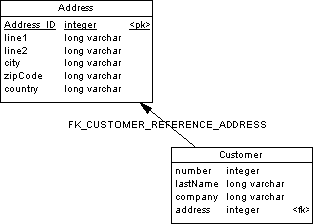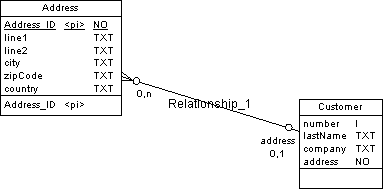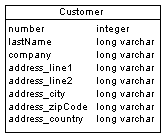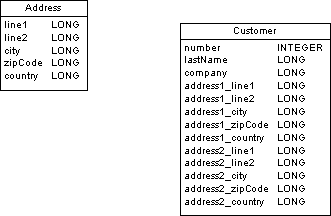When you specify a class as the data type of an attribute, you can control its generation to a CDM or PDM using the Generate table, Value Type and Generate ADT (PDM only) options in the Persistent groupbox on the Detail tab.
In the following example, Customer contains an attribute, address, for which the class Address, has been selected as data type (see Specifying a Classifier as a Data Type or Return Type):

Customer is specified as persistent, and the Generate table option is selected. You can generate the class Address in any of the following ways:
As a persistent class - by selecting Generate table in the Persistent groupbox on the Detail tab (see Class Properties):
As an embedded class - by selecting Value Type:
As an Abstract Data Type class (PDM only) - by selecting Generate ADT:
Note: If you specify a multiplicity (see Attribute Properties) for the attribute using a complex data type, when generating:
- A persistent class - the multiplicity is generated as a cardinality on the reference between the tables.
- An embedded class - attributes are generated the maximum number of times required by the multiplicity, but only if the maximum is set to a fixed value. In the following example, attribute multiplicity is 0..2, so attributes will be embedded twice:
- An abstract data type class - for DBMSs that support ARRAY and LIST for abstract data types, multiplicity affects generation as follows:
- 0..n or 1..n - generate as an abstract data type of type LIST (example: TABLE for Oracle).
- 1..2 or 0..10 - generate as an abstract data type of type ARRAY (example: VARRAY for Oracle).
- 0..1 or 1..1 - generate as an abstract data type of type OBJECT.





